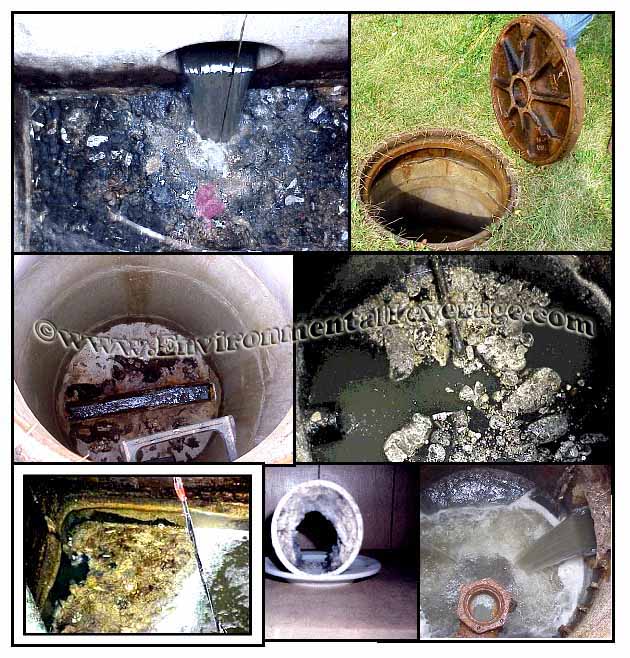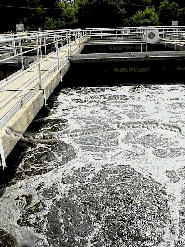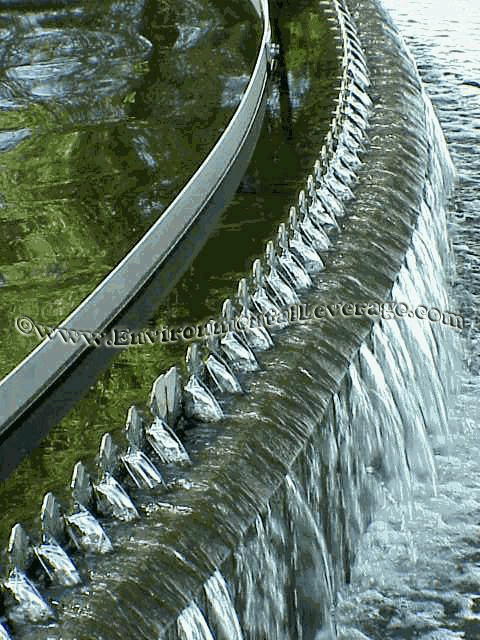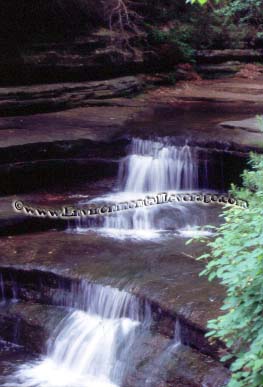Biological Products:
Bioaugmentation products for Wastewater applications in Papermills, Refineries, Chemical, Tanneries, Municipalities, Textiles, Steel, Agriculture, Animal feedlot, Gun Powder plant, Food and Beverage- Dairy Products, Orange Juice factory, Wineries, Cookie factory, Vegetable processing plant, Meat packing, Barbecue Restaurant, Aquaculture, Ornamental Ponds with algae , CAFO, Nursing homes, Military, Campgrounds, Universities, Regulatory agencies, River and Lake remediation
Lab Services:
Filamentous Identification Lab Service. One reason to identify filaments is to determine the filaments characteristics and then determine the type present. If the type is found out, a root cause can usually be associated with a particular filament. If the cause is known, then a correction can be made to alleviate problems. Chlorination is only a quick fix. Without process changes, filaments will grow back after chlorination. Wastewater Biomass Analyses and Cooling Tower Analyses also available
Training Materials:
Training is an integral part of any job. Not everyone is at the same level of training. Many people want beginning concepts and basics. Some need technical information or troubleshooting. Some want equipment, technology or process information. We have developed a full set of Basic training, Advanced training, Filamentous Identification the Easy Way as well as custom training CD's Manuals. We also provide hands-on training classes and soon will have an Online "E-University".
Audits and Consulting:
At Environmental Leverage® Inc., we have a team of experienced individuals who come into your plant with a fresh pair of eyes. The system is checked from influent to effluent. System optimization, equipment efficiency and operational excellence are key components explored. Key Benefits Equipment efficiency Total Cost of Operation reductions Reliability and safety An onsite audit is conducted to examine system parameters, process controls, and current monitor and control procedures. A physical walk-through is conducted, process flow diagrams are examined, previous design criteria are examined and current standard operating procedures are evaluated along with data logs.
|
Industry Troubleshooting- Fall WeatherWhat's New!
We have just added "Virtual Audits" to our capabilities. Check out our new Services. We are in the process of developing new courses for our ""Online E-University" in order to meet the needs of our global customers that cannot travel to our public classes.Visit our new website www.WastewaterElearning.com/Elearning
Wastewater in the Fall- Problems and Solutions
Wastewater treatment in itself can have many ups and downs on a daily or weekly basis. So many things can impact how successful the wastewater process is at removing the critical components of BOD, TSS and nutrients.
Another thing to consider, for every ten-degree change in the weather, the bacteria lose one logs growth of activity. If your outside weather drops 20 to 30 degrees in one day, that can significantly impact the activity in your system, if you do not have an influent with high temperatures consistently like many industrial plants do. That means you have to adjust the amount of RAS and WAS in your system to reflect the temperature changes. Well, you can only adjust the MLSS as quickly as your pumping capabilities allow. Another thing to remember, the bacteria are finicky. They do not like significant changes. Any time a change of more than 10 percent is made, on any variable that is critical to them, they get temperamental.
Let's walk through a couple of plants and where in the process they might have problems. The biggest problem areas are going to be where the plant is exposed to nature.
Let's start with a Lift station or Wet well if you are a municipality.Some lift stations have tons of grease sent to them, especially with the increase of strip malls and restaurants. Two things can happen in the lift stations with colder weather. The grease can harden with colder temperatures and start to form "turtles". These can clog up lines and cause problems with pumps, but are a bit easier to get out of the primaries. Biological products can be added to the lift stations to help with grease degradation. The second thing is that fall rains can cause grease to break off from the grease shelf in the lift stations or on rims along the pipes and send an overload of BOD to the wastewater treatment plant. High Grease can increase the growth of Nocardia and Microthrix parvicella and cause serious foaming problems. Watch what happens in your primaries during high rains. If you have manual skimmers, make sure to clean out the grease 2-3 times a day and do not allow it to build up.
Aeration Basins have issues of their own. With the wide swings in temperatures during the day and then in the evenings, vs. just the wide swings that can occur day to day in the fall, sludge age is critical to watch. Use the microscope daily. Many plants use a "fixed" number for MLSS and for the depth of bed in a clarifier. This is the wrong way to run your plant. If you get hit with a high loading of food, and you have 1 foot of solids and the bacteria are in a high growth phase, you are wasting the bacteria that are critical at this time to consume the food.
Maybe for a few days, you need two to three feet? Look under the microscope,
if you have a ton of amoebae and flagellates, it is young and you are losing
The point is, there is never anything "normal in a wastewater plant. It always changes, and you may need to make minor changes daily if you want to keep winning the time and numbers game. Use your microscope, the bacteria will tell you what direction you are headed in. Remember that they can look completely different in 24 hours! Their life span is only 20 minutes to 2 hours, so if they get hit with a spike of food, they will change quickly!
Clarifiers are another area that can significantly be impacted with fall and winter weather. The temperature changes can easily cause turnover in a clarifier and make the entire bed float. See our newsletter on Spring and Fall turnover and keep an eye on the ashing and gassing in your clarifier.
One way to help with the TSS and ashing is the use on spray nozzles with
effluent water. This can help temporarily knock down some of the TSS and cut
costs or eliminate the use of polymers in the clarifier.
What are some additional ways to help with weather changes?
Remember it does not take a ton of product to instantly bump up the system. A typical maintenance dosage is only 1 lb of product for every 1MGD a day if the typical flow is around 2-300 parts of BOD. You can do the math, if your flow is lower, but the BOD higher make adjustments. See our Math calculations where in 24 hours 6.7 lbs of product equal the equivalent of trucking in a 4000 gallons of MLSS from the neighboring plant! Sometimes being prepared for an upset is better than waiting for it to happen and scrambling. The bacteria products usually have a pretty long shelf life- 6 months to a year, so having a small amount on hand can be a good idea if your plant has the potential for upset conditions or wide swings in influent loading.
Biofeeders for the use of bioaugmentation in Papermills
Dual programs with Bacterial supplements and micronutrients can also significantly cut back on the dosage of product required to help meet discharge permits. The correct amount of nutrients as well as micronutrients can make or break a bacterial program.
More troubleshooting newsletters
More on Lagoons and weather issues Lagoons-Winter BOD issues and bioaugmentation Bioaugmentation in once through lagoons can significantly impact not only BOD and TSS in the final effluent, but a properly designed program can help lower solids generation in lagoons that lead to costly dredging. Troubleshooting Lagoon Systems Total System Optimization- Case History Wild Weather-Impact on a wastewater treatment plant Hurricane or Severe Weather Upset recovery program
Contact Environmental Leverage Inc. if you need help with your plant on some of these issues!!
I do not have filaments at my plant
Sign up for our monthly newsletter
|

 If your plant mixes storm water run off that gets routed through the
wastewater plant, many times oil can drip on the pavement or parking lots.
This gets washed off during high rains, ends up in the system and down to
the wastewater plant. You will see the colorful rainbow sheen on the
surface. A normal primary clarifier will not capture this, only API's or
DAF's will take this out of the system. This can be a problem because these
types of oils will also cause the growth of Nocardia and Microthrix in the
aeration basins. Some plants perform major shutdowns, and clean-ups of
machinery in the fall or winter when business slows down. Leaky oil from
machinery that can get into the system can also cause the same problems.
If your plant mixes storm water run off that gets routed through the
wastewater plant, many times oil can drip on the pavement or parking lots.
This gets washed off during high rains, ends up in the system and down to
the wastewater plant. You will see the colorful rainbow sheen on the
surface. A normal primary clarifier will not capture this, only API's or
DAF's will take this out of the system. This can be a problem because these
types of oils will also cause the growth of Nocardia and Microthrix in the
aeration basins. Some plants perform major shutdowns, and clean-ups of
machinery in the fall or winter when business slows down. Leaky oil from
machinery that can get into the system can also cause the same problems. the time and numbers game. On the other hand, if the temperature is warmer,
there has been no rain, the flows are slowed down, you may have a very old
sludge age, and you have rotifers and worms in the system. You need to
increase your wasting in spite of what your "normal" standards are.
the time and numbers game. On the other hand, if the temperature is warmer,
there has been no rain, the flows are slowed down, you may have a very old
sludge age, and you have rotifers and worms in the system. You need to
increase your wasting in spite of what your "normal" standards are. 
 What are biofeeders and why would a plant want to use them. Since
wastewater in the winter months more than any time is a time and numbers
game, it may be hard to increase the numbers cost effectively. It would be
cost prohibitive to have to add 40-60 lbs of product a day to the system. In
these cases, a biofeeder can be used to "grow up" the bacteria and increase
the numbers. With the use of a biofeeder and 18-24 hours grow up, 10 lbs of
bacteria can be the equivalent of 100 lbs. Now, the cost of a program is
significantly more realistic and an acceptable way to help reduce BOD in a
plant.
What are biofeeders and why would a plant want to use them. Since
wastewater in the winter months more than any time is a time and numbers
game, it may be hard to increase the numbers cost effectively. It would be
cost prohibitive to have to add 40-60 lbs of product a day to the system. In
these cases, a biofeeder can be used to "grow up" the bacteria and increase
the numbers. With the use of a biofeeder and 18-24 hours grow up, 10 lbs of
bacteria can be the equivalent of 100 lbs. Now, the cost of a program is
significantly more realistic and an acceptable way to help reduce BOD in a
plant.

